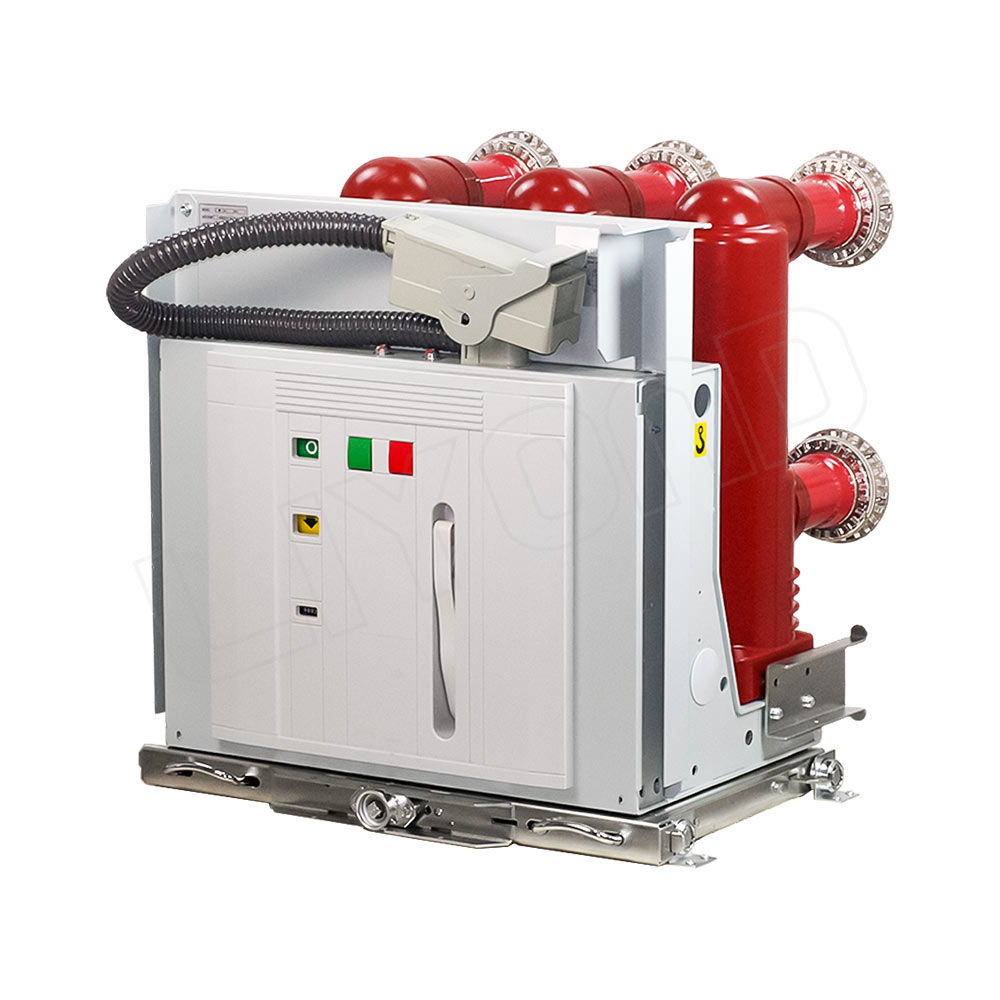The Working Principle of a Vacuum Circuit Breaker Explained

Introduction to Vacuum Circuit Breakers
A vacuum circuit breaker is one of the most reliable and efficient types of circuit breakers used in modern electrical systems. It plays a crucial role in protecting electrical circuits and equipment from damage caused by overcurrent or short circuits. The unique feature of a Vacuum circuit breaker lies in its ability to extinguish the electric arc within a vacuum chamber. This technology ensures safety, durability, and minimal maintenance, making it ideal for medium and high-voltage applications.
What Is a Vacuum Circuit Breaker?
A vacuum circuit breaker is an electrical switching device that interrupts the current flow when a fault is detected. It uses a vacuum as the arc-quenching medium, unlike traditional breakers that rely on air, oil, or gas. When the contacts inside the vacuum circuit breaker separate, an arc forms between them. However, because there are no gas molecules in a vacuum to sustain the arc, it quickly extinguishes. This property makes the vacuum circuit breaker highly efficient and suitable for repeated operations.
Construction of a Vacuum Circuit Breaker
The construction of a vacuum circuit breaker is designed to ensure reliable operation and long service life. The main components include:
- Vacuum Interrupter: This is the core part of the vacuum circuit breaker where the arc is extinguished.
- Contacts: These are made from materials such as copper-chromium alloy, capable of withstanding high temperature and arc energy.
- Operating Mechanism: It opens and closes the contacts when the breaker is triggered.
- Insulating Enclosure: The outer casing provides insulation and protects internal parts.
- Arc Shield: Prevents metal vapors from depositing on the vacuum envelope.
Each component of the vacuum circuit breaker works together to ensure safe and fast interruption of current flow during fault conditions.
Working Principle of a Vacuum Circuit Breaker
The working principle of a vacuum circuit breaker is based on the creation and extinction of the arc in a vacuum environment. When the contacts of the vacuum circuit breaker are closed, current flows normally through them. When a fault occurs, the protection relay sends a signal to the breaker to open its contacts.
As the contacts separate, an arc forms between them due to ionization of the metal vapors. However, since the pressure inside the vacuum circuit breaker is extremely low (around 10⁻⁶ bar), there are not enough particles to maintain the arc. The arc quickly extinguishes as the current passes through zero. The vacuum’s dielectric strength recovers almost instantly, preventing a re-strike.
This rapid arc extinction is the main reason the vacuum circuit breaker is so effective in high-voltage systems.
Advantages of a Vacuum Circuit Breaker
There are many advantages to using a vacuum circuit breaker, including:
- High Dielectric Strength – The vacuum has excellent insulating properties, allowing the vacuum circuit breaker to handle high voltages safely.
- Low Maintenance – Since there is no oil or gas to replace, the vacuum circuit breaker requires minimal upkeep.
- Compact Design – The design of the vacuum circuit breaker is compact and space-saving.
- Long Life – The contacts suffer less erosion due to quick arc extinction, increasing the vacuum circuit breaker’s lifespan.
- Environmentally Friendly – The vacuum circuit breaker does not emit harmful gases or require oil handling.
- Quiet Operation – It operates silently compared to air or oil circuit breakers.
These features make the vacuum circuit breaker the preferred choice for industrial and utility power systems.
Applications of a Vacuum Circuit Breaker
The vacuum circuit breaker is widely used in several fields, including:
- Power Plants – Protecting generators and transformers.
- Industrial Systems – Managing medium-voltage distribution networks.
- Commercial Buildings – Ensuring electrical safety in high-demand environments.
- Substations – Providing reliable switching for medium-voltage transmission lines.
- Railway Electrification Systems – Managing power in traction systems.
Because of its reliability and safety, the vacuum circuit breaker is considered the most advanced technology in circuit protection.
Maintenance of a Vacuum Circuit Breaker
Although the vacuum circuit breaker requires minimal maintenance, regular inspections are still important. Technicians check the contact wear, mechanical operation, and insulation resistance. The vacuum interrupter of the vacuum circuit breaker is sealed for life and does not require refilling. If the vacuum level drops, the entire interrupter unit is replaced rather than repaired.
This makes maintenance simple and ensures continuous, safe operation of the vacuum circuit breaker over many years.
Comparison with Other Circuit Breakers
Compared to oil, air, or SF6 circuit breakers, the vacuum circuit breaker offers several advantages. Oil circuit breakers involve a risk of fire, while SF6 gas breakers pose environmental concerns. Air circuit breakers require regular maintenance due to contact oxidation. The vacuum circuit breaker, however, eliminates these issues through its sealed design and superior arc-quenching properties.
Therefore, the vacuum circuit breaker is considered a cost-effective and sustainable option for modern electrical protection.
Future of Vacuum Circuit Breaker Technology
With advancements in materials and automation, the vacuum circuit breaker continues to evolve. Manufacturers are focusing on improving the contact materials and increasing breaking capacity. Smart monitoring systems are being integrated to track the performance of each vacuum circuit breaker in real time.
As the demand for renewable energy and sustainable power systems grows, the vacuum circuit breaker will remain a vital component in ensuring safety and reliability across electrical grids.
Conclusion
In conclusion, the vacuum circuit breaker stands out as a superior technology for circuit protection. Its arc-quenching ability, long lifespan, low maintenance, and environmental benefits make it indispensable in modern electrical networks. Understanding the working principle of a vacuum circuit breaker helps engineers and technicians appreciate its importance in maintaining stable and safe power systems.
Aierway emphasizes the continued innovation and application of the vacuum circuit breaker as the future of electrical safety and efficiency.
Leave a Comment